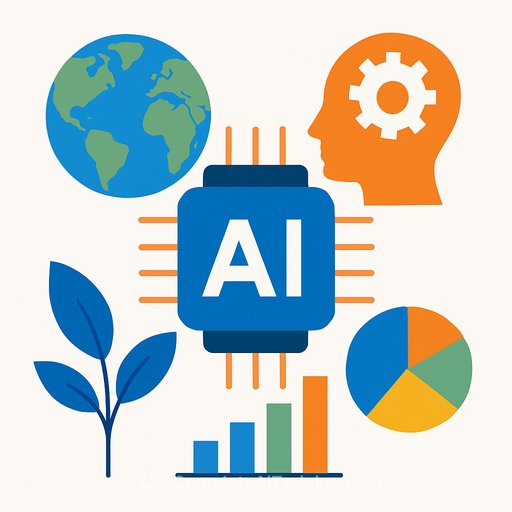AI and the SDGs: A Double-Edged Sword for Global Progress
The United Nations established the Sustainable Development Goals (SDGs) in 2015 to solve the world's most critical problems. Yet, as AI has grown exponentially, progress on key targets like poverty, hunger, and climate has stalled or even reversed. AI presents new ways to address these goals but also threatens to amplify the very issues they target, such as through the massive energy needs of data centers.
The question is no longer if AI matters for sustainable development. The question is how we apply it to decrease costs, expand access, and improve decisions without deepening inequality.
The Promise: Smarter Agriculture
A promising application is in agriculture. AI assistants, available in multiple local languages, now answer millions of questions from farmers each year. Their success comes from three key dynamics.
- Cost Compression: The underlying models are becoming more applicable, infrastructure is maturing, and deployment is cheaper.
- Usability: Voice and image inputs remove literacy and typing as barriers, opening up digital participation for more people.
- Context Applicability: Systems can combine a farmer's query with real-time weather, market prices, and local knowledge for dynamic, specific guidance.
These features directly address SDGs related to food security, fair work, and climate resilience. They provide practical tools, not just static advice.
The Data Gap: A Critical Hurdle
Conventional datasets become outdated quickly under rapid environmental change. Worse, most languages and contexts central to the SDGs are underserved in the training data used for AI models.
Closing this gap requires building multilingual, community-driven "gold" datasets. These datasets will anchor models in on-the-ground realities and reduce systemic errors for marginalized communities.
Beyond the Model: Deployment and Governance
Real benefits happen when tools meet users, not in idealized training environments. The answer is responsible deployment now, not endless delays in a search for perfection. Governance and infrastructure are what determine if AI closes socio-economic gaps or widens them.
Ethical principles and voluntary codes are a start, but regulatory clarity and dependable funding are what turn principles into facts. We could learn from the ethical paradigms of spiritual leaders and Indigenous peoples. Making digital access-devices, connectivity, and computing power-a civil right would correct a systemic barrier that excludes communities from AI's advantages.
Public investment in disadvantaged groups is not charity; it is a necessary correction. It enables their engagement in data co-creation, service co-design, and governance. As AI and climate distress destabilize social structures, a lack of inclusive digital literacy will only widen existing cracks.
Community-Led AI: The Path to Trust
A community-led approach is a cultural necessity for building trust. Models built for one city's risks are rarely transferable to another. Hyperlocal information, co-produced with citizens, is essential for effective flood alerts, heat-risk maps, and targeted services.
Low-code geospatial tools can empower non-experts to combine satellite imagery, sensor feeds, and scenario models, turning them from passive recipients into co-analysts. Trust grows when communities shape the questions, own parts of the process, and see outputs tied to tangible improvements, not extractive data practices. Co-creation and empathy are essential.
The Energy Dilemma
No assessment of AI is complete without confronting its energy appetite. Training and running large models consumes immense power, counteracting climate co-benefits with added emissions and grid strain. If computational power is the new bottleneck, digital equity clashes with energy justice.
Vulnerable populations often lack both affordable power and high-speed internet, preventing them from building or even using AI models. The solution requires efficiency, fit-for-purpose model selection, and policies that prevent the concentration of data centers in ways that repeat past resource inequities. The next round of SDGs must ensure an AI dividend is not paid for with a climate deficit.
The Path Forward: Human-Centric Choices
The choice is not between AI as a solution or a threat. AI will develop whether we want it to or not. The choices we make today will shape AI infrastructure for decades.
AI can serve as a modern accountability tool, revealing which interventions work and why. But the human element remains paramount. Nothing can replace human judgment, political will, and social trust. The most important work remains ethical: to pledge justice in the funding, governance, and measurement of AI.
AI will only assist the SDGs if it is designed with, for, and by the people whose lives it will transform. Building the skills to do this work is critical. Investing in comprehensive AI training ensures that developers and policymakers alike can build systems that are not just technically proficient but also ethically sound and socially beneficial.
```Your membership also unlocks:






